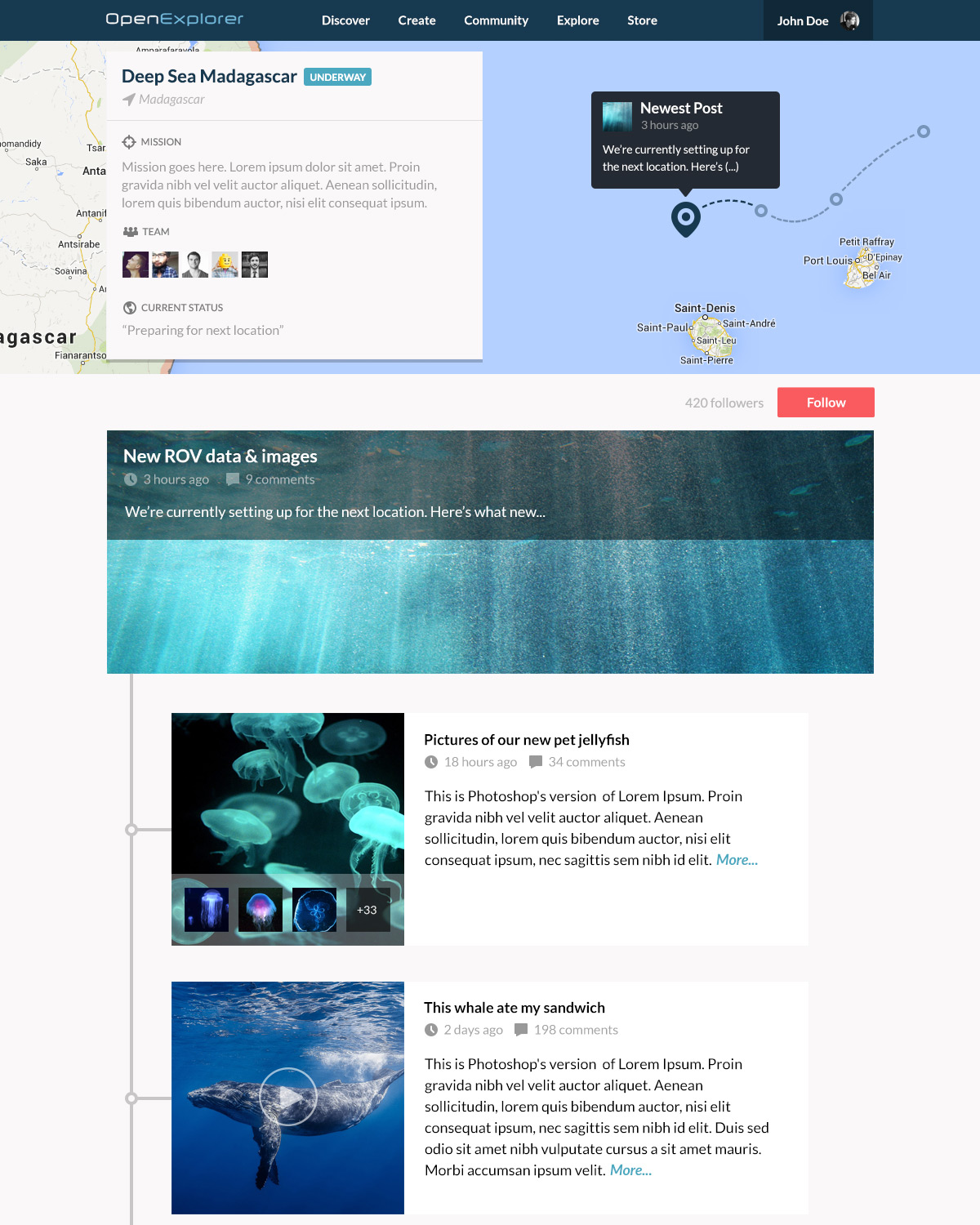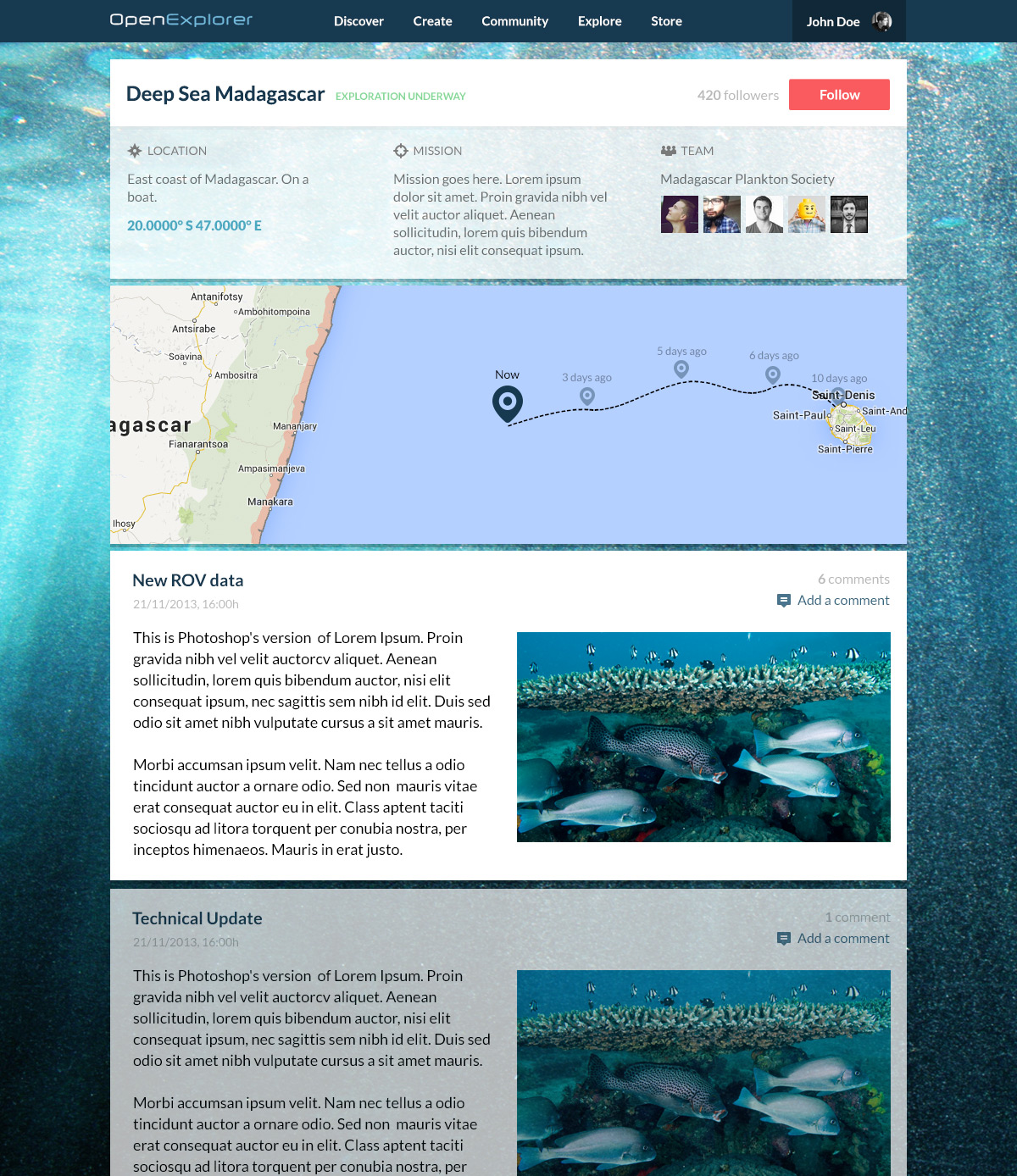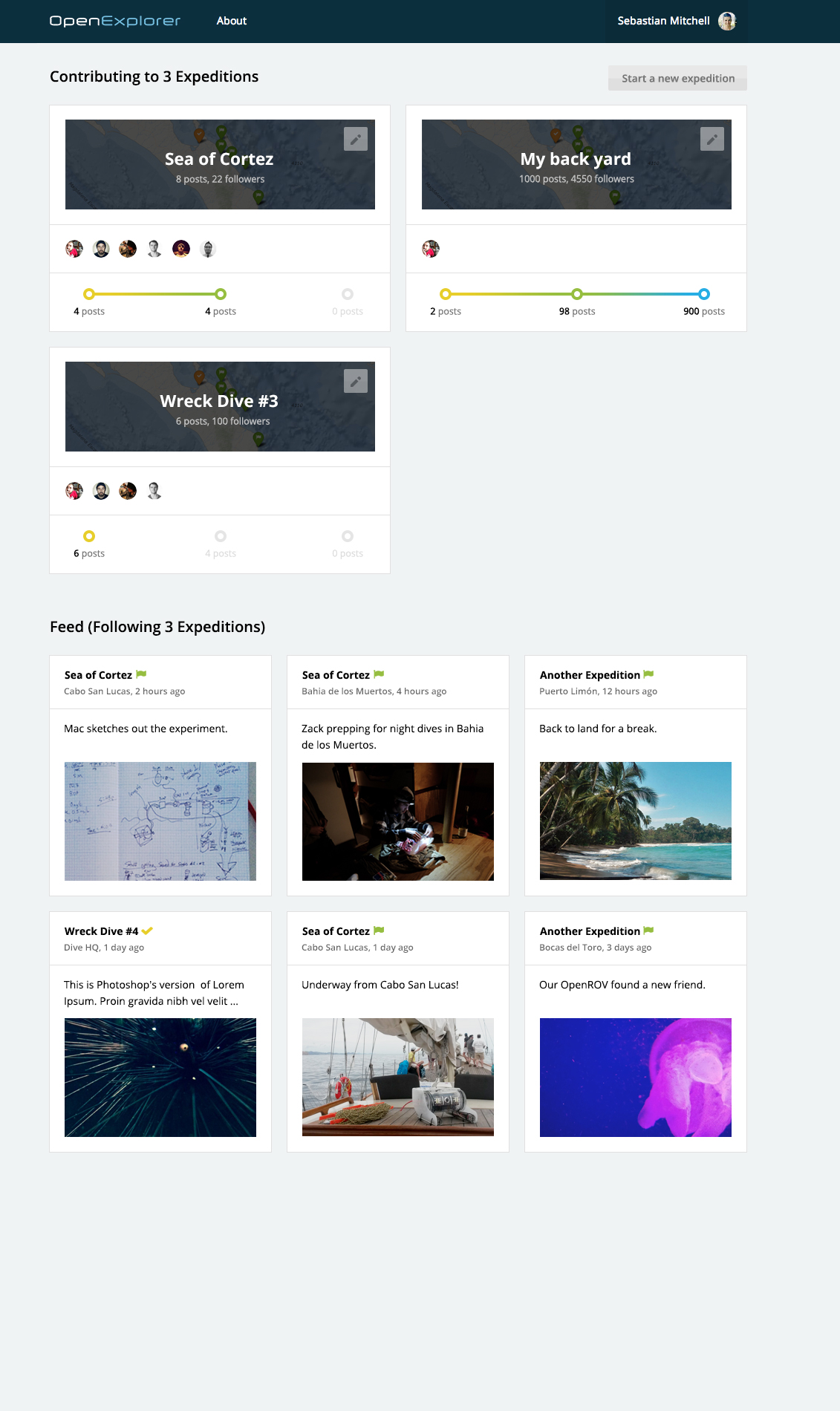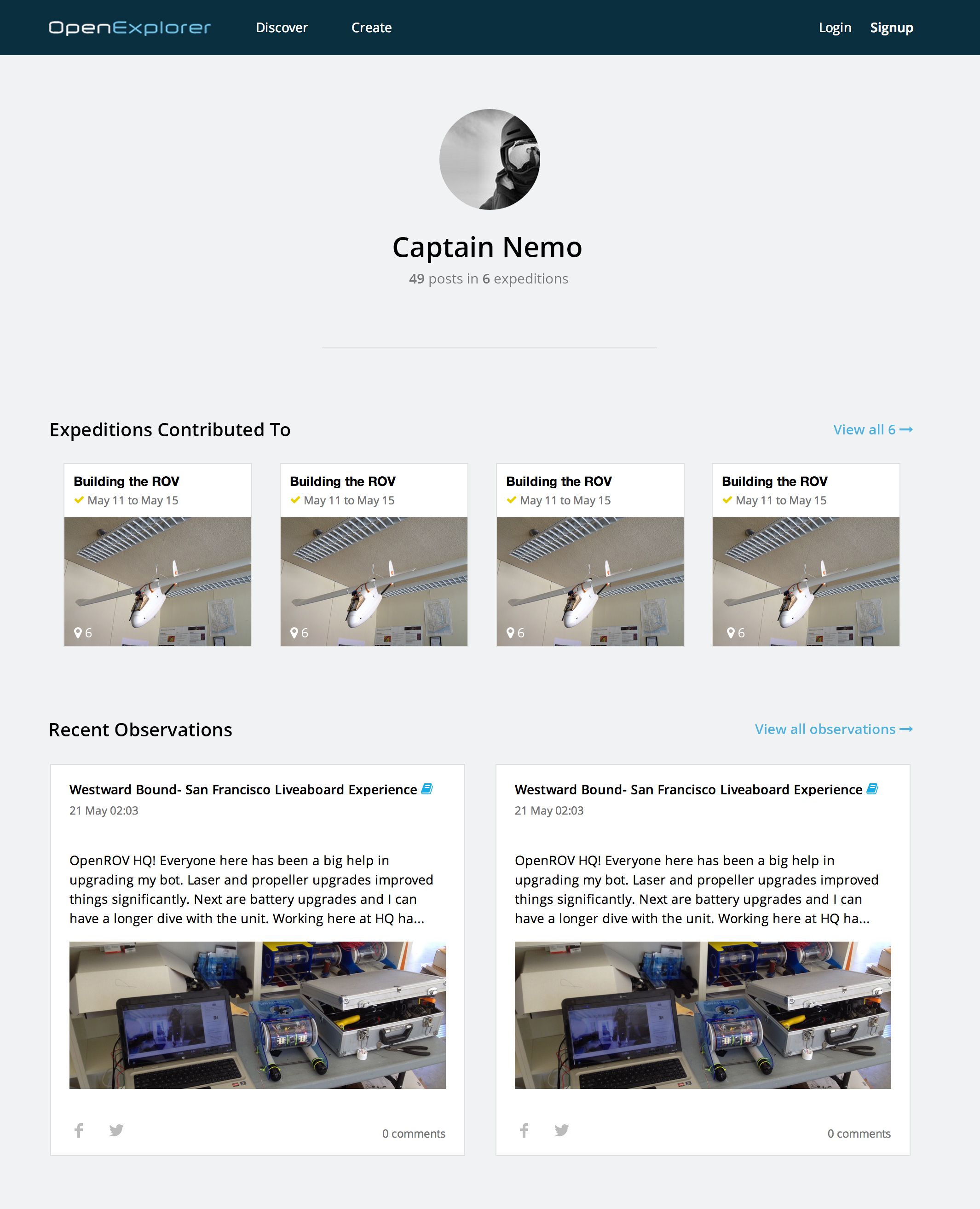We blogged about OpenExplorer in November last year, describing how we used it to track our Nile adventure. We thought it would be interesting to go into more detail about what exactly this tool is and how our Solutions Team was engaged to build it.
OpenExplorer is a digital log book which allows adventurers and citizen scientists to plan, document, and share their expeditions with the OpenROV community. Through the site, explorers can also crowdfund expeditions and receive sponsorship, and users can discover and follow exciting expeditions worldwide. The platform launched in August 2014, grew quickly, and has been featured in Fast Company and Wired.
Expeditions on OpenExplorer feature an interactive map, a geo-tagged timeline of journal entries, and the ability for users to follow and comment on expeditions.
The Solutions Team’s role began with the OpenROV team’s vision of a way for their community of underwater robot enthusiasts to share their trips and collaborate. They had planned how most of the functionality of the platform would work, but weren’t sure how it could best be implemented. It turned out that Ushahidi’s Crowdmap API was perfect for what they wanted to do, and would be much faster to build with than creating a platform from scratch.
The project officially kicked off in late 2013. Solutions Team designer Sebastian started by creating some rough mockups to capture the functional requirements OpenROV had in mind:





- The ability to divide an expeditions log entries into 3 stages (Preparation, Underway, Debriefing) on a timeline, adding a rich layer of storytelling to the platform;
- Creating an “Explorer Dashboard” where users could manage their expeditions and see their followers and comments;
- Integrating a payment system allowing anyone to help crowdfund an expedition.